Microsoft Fabric tries to bring everything together: data lakes, pipelines, analytics, and governance, into one platform. It’s a big promise, but not every team wants to bet their entire data stack on a single ecosystem. Some need more flexibility, others prefer open standards, or simply want tools that fit how they already work. In this guide, we’ll look at some of the best Fabric alternatives that offer the same all-in-one vision without the tight coupling to Microsoft’s world. Whether you care most about real-time data flow, easier scaling, or freedom to mix and match tools, these platforms show there’s more than one way to build a modern, connected data environment.

1. AppFirst
AppFirst is a cloud automation platform built for developers who want to focus on building products instead of managing infrastructure. It takes care of provisioning secure, compliant environments across major cloud providers like AWS, Azure, and GCP – without the need for Terraform scripts, YAML files, or manual VPC setup. Teams simply define what their applications require, such as compute, database, or networking, and AppFirst handles everything automatically in the background. It’s a straightforward way to simplify operations for teams that move fast but still need consistency and security in their deployments.
The platform also comes with built-in logging, monitoring, and alerting tools to keep visibility high as systems grow. It automatically tracks costs and configuration changes, helping teams stay transparent and compliant without additional tools or manual work. Whether deployed as a SaaS service or self-hosted solution, AppFirst gives teams the structure of managed infrastructure with the freedom of a developer-first experience. It’s a practical choice for organizations looking to streamline cloud operations and eliminate DevOps bottlenecks in their data and application workflows.
Faits marquants :
- Automates provisioning of secure, compliant infrastructure across multiple clouds
- Works seamlessly with AWS, Azure, and GCP
- Includes built-in monitoring, logging, and alerting
- Tracks cost visibility and configuration changes automatically
- Available as SaaS or self-hosted deployment
Best For:
- Teams looking to simplify DevOps and reduce manual infrastructure tasks
- Developers managing multi-cloud environments
- Companies building data-intensive or cloud-native applications
- Organizations wanting transparent, compliant infrastructure automation
Contacts :
- Site web : www.appfirst.dev
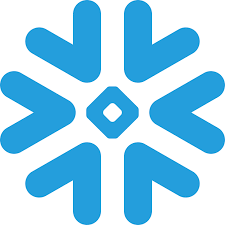
2. Flocon de neige
Snowflake is basically a cloud platform that helps teams handle everything around data – from storing and processing to running analytics and AI. It’s built for people who don’t want to spend their days managing infrastructure or dealing with different cloud quirks. You can pull in data from anywhere, build models, or share live datasets, all from the same place. For teams that like what Microsoft Fabric does but want more freedom, Snowflake is a solid alternative because it works across AWS, Azure, and Google Cloud without locking you in.
What makes Snowflake appealing is how much of the heavy lifting it takes care of. Things like security, backups, and compliance are already baked in, so engineers don’t have to worry about maintaining all that manually. Developers can spin up data pipelines or build AI-driven apps without touching servers, while analysts get faster access to clean, ready-to-use data. It’s a way to keep things simple while still scaling big projects.
Faits marquants :
- Fully managed platform for data, analytics, and AI
- Works across AWS, Azure, and Google Cloud
- Built-in security, compliance, and recovery
- Supports open table formats and easy data sharing
- Unified space for apps, AI, and analytics
Best For:
- Teams that want a flexible alternative to Microsoft Fabric
- Companies sharing data across multiple platforms
- Organizations that value built-in compliance and governance
- Developers building AI or data-heavy products without ops work
Contacts :
- Site web : www.snowflake.com
- Email: press@snowflake.com
- Address: Suite 3A, 106 East Babcock Street Bozeman, Montana 59715, USA
- LinkedIn : www.linkedin.com/company/snowflake-computing
- Facebook : www.facebook.com/Snowflake-Computing
- Twitter/X: x.com/Snowflake
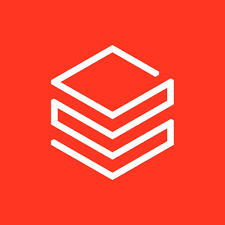
3. Bases de données
Databricks is all about bringing data and AI together in one place. It lets teams build everything from ETL pipelines to large language models without jumping between different tools. The platform follows what they call a “Data Intelligence” approach, where analytics, governance, and AI all live under one roof. For anyone exploring Microsoft Fabric alternatives, Databricks offers a more open setup that plays nicely with other technologies and cloud providers.
It runs on what’s known as a lakehouse architecture, which is kind of a mix between a data warehouse and a data lake. That means it can handle both structured and unstructured data while keeping things clean and traceable. Teams can manage machine learning models, run SQL queries, or build AI apps without needing a dozen different tools. Everything stays connected, and that makes scaling much easier.
Faits marquants :
- Combines data, AI, and governance in one workspace
- Open-source friendly and works across multiple clouds
- Handles structured and unstructured data
- Built-in orchestration, monitoring, and version tracking
- Made for collaboration between data, AI, and engineering teams
Best For:
- Companies building or scaling AI projects
- Teams that prefer open-source and hybrid setups
- Organizations running advanced analytics and ML workloads
- Businesses trying to merge their data and AI pipelines
Contacts :
- Site web : www.databricks.com
- Téléphone : 1-866-330-0121 1-866-330-0121
- Address: Databricks Inc. 160 Spear Street, 15th Floor San Francisco, CA 94105
- LinkedIn : www.linkedin.com/company/databricks
- Facebook : www.facebook.com/databricksinc
- Twitter/X: x.com/databricks
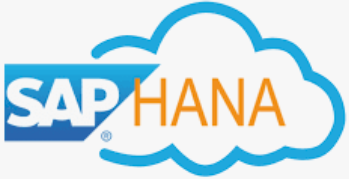
4. SAP HANA Cloud
SAP HANA Cloud is SAP’s cloud database for running big, high-stakes business systems. It’s used under the hood of SAP’s own data tools, but it also works on its own for handling different kinds of data – whether that’s relational, graph, document, or spatial. As an alternative to Microsoft Fabric, it fits well for enterprises that want a strong, reliable database layer that’s ready for AI-driven apps but still connects with their existing systems.
The main idea behind SAP HANA Cloud is to take away the grunt work from database management. It’s fully managed and secure, so teams can focus on building smart applications instead of worrying about uptime or compliance. Developers can plug in generative AI, connect real business data, and scale without a lot of maintenance. It’s not flashy, but it’s stable and built for teams that need something dependable.
Faits marquants :
- Multi-model database for different data types
- Fully managed with built-in security and compliance
- Integrates with SAP Business Data Cloud and other platforms
- Scales easily for large workloads
- Supports AI-driven and intelligent applications
Best For:
- Enterprises already using SAP systems
- Companies needing secure, high-performance databases
- Teams building AI-enabled or data-driven apps
- Businesses that need strong governance and uptime guarantees
Contacts :
- Site web : www.sap.com
- Téléphone : +1-800-872-1727
- LinkedIn : www.linkedin.com/company/sap
- Facebook : www.facebook.com/SAP
- Instagram : www.instagram.com/sap
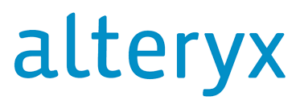
5. Alteryx
Alteryx builds tools that make data analytics feel a lot less complicated. Their main platform, Alteryx One, pulls together everything teams usually juggle across different tools: data prep, automation, and AI, into one place. You can clean, combine, and analyze data without writing much code, which makes it easier for people outside IT to actually use the data they have. One of its standout features is the AI Data Clearinghouse, which helps keep your company’s AI models governed and explainable so you know where your data’s coming from and how it’s being used.
Instead of bouncing between platforms to clean data, build reports, and set up automations, Alteryx keeps the process simple. You connect your cloud sources, drag and drop workflows, and automate the stuff that usually eats up time. It’s practical, secure, and built to work across departments, so analysts, managers, and execs can all use it without getting buried in technical details.
Faits marquants :
- Single platform for analytics, automation, and AI
- Built-in governance and compliance features
- AI Data Clearinghouse for secure and explainable AI
- No-code and low-code workflow design
- Works smoothly with major cloud platforms
Best For:
- Teams that want to manage analytics and automation in one place
- Companies building AI workflows with strong data governance
- Non-technical users who need access to analytics tools
- Businesses looking to reduce manual reporting and cleanup work
Contacts :
- Site web : www.alteryx.com
- Téléphone : +1 888 836 4274
- Email: corpdev@alteryx.com
- Adresse : 3347 Michelson Drive Suite 400 Irvine, CA 92612
- LinkedIn : www.linkedin.com/company/alteryx
- Facebook : www.facebook.com/alteryx
- Twitter/X: x.com/alteryx
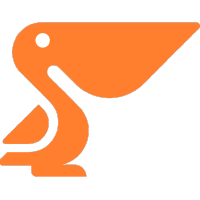
6. Peliqan
Peliqan is a data platform that’s designed to make life easier for teams that need to move and work with data quickly. It pulls data from over 250 sources – things like SaaS apps, spreadsheets, and databases, and brings it all into one clean workspace. You can use SQL or low-code Python to transform and prepare the data, then push it straight into dashboards, APIs, or AI tools. For teams exploring Microsoft Fabric alternatives, Peliqan is a simpler, lighter option that still does a lot without forcing you into complex setups.
What makes it stand out is how approachable it feels. There’s a spreadsheet-style interface for exploring data, plus built-in AI help for writing queries or setting up pipelines. Developers can create automations or APIs, while business users can get insights without needing help from IT. Everything runs under proper security standards like SOC 2 and GDPR, so it’s enterprise-ready but still easy to use. It’s the kind of platform that saves time without making you rethink your whole data stack.
Faits marquants :
- End-to-end platform for ELT, transformation, and data activation
- Connects to databases, SaaS tools, and APIs
- Low-code environment with SQL and Python support
- Built-in AI query assistant and automation tools
- SOC 2 and GDPR certified for security and compliance
Best For:
- Teams wanting quick, low-code data integration
- Companies connecting multiple data systems without heavy setup
- Organizations building internal tools, APIs, or AI apps
- Businesses that need speed, flexibility, and simplicity
Contacts :
- Website: peliqan.io
- Phone: +32 9 298 07 47
- Email: hello@peliqan.io
- Address: Grauwpoort 1 9000 Gent BELGIUM
- LinkedIn: www.linkedin.com/company/peliqan-data
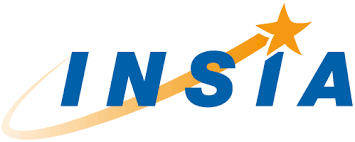
7. INSIA
INSIA takes a different approach to analytics – it’s built more like a decision engine than a dashboard tool. Instead of just showing charts, it helps teams figure out what’s happening and what to do next. The platform uses AI to pull insights from your data automatically, flagging things like revenue leaks, supply chain delays, or marketing trends. It’s aimed at businesses that want clear answers rather than a wall of KPIs.
Everything in INSIA runs in a single no-code environment, so you don’t need a team of data analysts to get value out of it. Each department gets insights tailored to its needs: sales, operations, procurement, you name it. It’s quick to set up, easy to understand, and built around strong security standards like ISO, GDPR, and HIPAA. Basically, it’s for teams that want to move from reactive reporting to data that actually drives decisions.
Faits marquants :
- All-in-one, no-code platform for AI-powered analytics
- Generates insights and recommendations automatically
- Pre-built intelligence for multiple business functions
- Compliant with ISO, GDPR, and HIPAA standards
- Cuts down on manual reporting and setup time
Best For:
- Teams ready to replace dashboards with decision-ready insights
- Businesses that want AI guidance without complex tools
- Companies focused on automating reports and analysis
- Organizations that need secure, explainable AI analytics
Contacts :
- Website: www.insia.ai
- Email: hello@forty4hz.com
- LinkedIn: www.linkedin.com/company/44hz
- Facebook: www.facebook.com/forty4Hz
- Instagram: www.instagram.com/forty4hz

8. Tableau
Tableau, part of Salesforce, focuses on helping people make sense of data through visuals instead of complicated spreadsheets or scripts. The platform is designed so anyone: analysts, managers, or executives, can explore data, ask questions, and find patterns without needing to be a data scientist. It can run in the cloud, on-premises, or inside Salesforce, which makes it flexible for different setups. Tableau recently introduced what it calls “agentic analytics,” a new feature that lets data insights turn into automated actions across teams and systems.
At its core, Tableau is about making analysis intuitive. Instead of forcing users to learn complex tools, it lets them work naturally through charts, dashboards, and visual storytelling. It connects to almost any data source and includes built-in AI and governance features so organizations can trust the results. For teams comparing Microsoft Fabric alternatives, Tableau stands out for how it balances depth and simplicity, giving everyone the power to act on data, not just look at it.
Faits marquants :
- Visual analytics platform with AI-driven insights
- Works in cloud, on-premises, or integrated with Salesforce
- New “agentic analytics” for autonomous, data-driven actions
- Governance, data management, and collaboration tools included
- Strong global community and learning resources
Best For:
- Teams looking for visual, interactive analytics without heavy coding
- Companies integrating analytics into everyday decision-making
- Organizations that value ease of use and flexible deployment
- Businesses focused on building a strong data culture
Contacts :
- Site web : www.tableau.com
- Téléphone : 1-800-270-6977
- LinkedIn : www.linkedin.com/company/tableau-software
- Facebook : www.facebook.com/Tableau
- Twitter/X: x.com/tableau
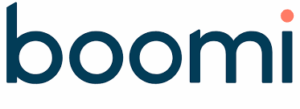
9. Boomi
Boomi is built around one main idea: connecting everything – applications, APIs, data, and even AI agents, on a single platform. It’s often used by teams trying to simplify complex tech stacks or automate workflows that span multiple systems. The platform supports integration, API management, and data orchestration, all under a unified interface. It’s also designed to make AI adoption smoother by keeping data synchronized and governed, so models can rely on accurate information.
What sets Boomi apart from typical integration tools is its reach. It comes with a large library of pre-built connectors and automation recipes, plus strong security and compliance credentials like FedRAMP, ISO, and HIPAA. Whether running in the cloud, on-premises, or a hybrid setup, Boomi helps teams manage integrations with less manual effort. It’s a solid choice for organizations looking to link up multiple systems while keeping data consistent and secure.
Faits marquants :
- Unified platform for integration, APIs, and AI-driven automation
- Pre-built connectors and recipes
- Enterprise-grade security and compliance certifications
- Works in hybrid, cloud, or on-prem environments
- Low-code tools for building workflows and automations
Best For:
- Enterprises connecting multiple systems or clouds
- Teams automating processes across departments
- Organizations building AI-ready data foundations
- Companies that need strong security and compliance
Contacts :
- Site web : boomi.com
- Address: 100 St Paul St, Denver, CO 80206, USA
- LinkedIn : www.linkedin.com/company/boomi-inc
- Facebook : www.facebook.com/Boomi.Official
- Instagram : www.instagram.com/_boomiofficial
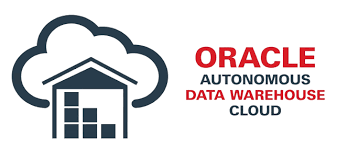
10. Oracle Autonomous Data Warehouse
Oracle’s Autonomous Data Warehouse is built for teams that want a powerful data warehouse without managing the usual technical upkeep. It handles most of the background work automatically, provisioning, tuning, backups, and patching, so users can focus on analysis instead of maintenance. The platform comes with built-in tools for data loading, transformation, machine learning, and even low-code app building through Oracle APEX.
It’s a good fit for businesses that rely heavily on analytics but don’t want to depend on IT for every change. The self-service environment allows analysts and developers to ingest, prepare, and analyze data directly through the web console. With built-in machine learning, graph, and spatial analytics, Oracle’s platform covers both everyday reporting and advanced use cases. For teams exploring alternatives to Microsoft Fabric, it offers a structured yet automated way to run enterprise-grade analytics with minimal overhead.
Faits marquants :
- Fully managed, self-service data warehouse
- Built-in tools for data prep, analytics, and machine learning
- Low-code development with Oracle APEX
- Automated scaling, tuning, and backups
- Integrated graph and spatial analytics features
Best For:
- Teams needing a hands-off, high-performance data warehouse
- Companies building data-driven applications
- Organizations using analytics and ML at enterprise scale
- Businesses wanting automation without sacrificing control
Contacts :
- Site web : www.oracle.com
- Téléphone : +1.800.633.0738
- LinkedIn : www.linkedin.com/company/oracle
- Facebook : www.facebook.com/Oracle
- Twitter/X: x.com/oracle

11. IBM Cloud Pak for Data
IBM Cloud Pak for Data is IBM’s take on a modern data and AI platform, built around a data fabric architecture. The idea is to connect scattered data across systems and clouds without forcing teams to physically move it. It helps organizations collect, organize, and analyze data in one unified space, whether they’re running it on-premises or as a managed service on IBM Cloud. Everything is modular, so teams can use only what they need – from governance tools to analytics, AI lifecycle management, and data privacy controls.
It’s made for companies that struggle with siloed data or want a governed, secure way to scale AI. The platform focuses heavily on data access, automation, and compliance, letting users work with data directly, whether through code, a drag-and-drop canvas, or no-code options. IBM designed it to boost productivity and reduce manual ETL work, giving data engineers and analysts more time to build value instead of maintaining infrastructure.
Faits marquants :
- Modular data and AI platform built on a data fabric foundation
- Works across hybrid and multicloud environments
- Enables data access without replication or movement
- Integrated governance, privacy, and compliance controls
- Flexible tools for coders, analysts, and non-technical users
Best For:
- Enterprises managing large, distributed data environments
- Teams needing secure, governed access to data across clouds
- Companies aiming to unify analytics and AI workflows
- Organizations moving toward a data fabric architecture
Contacts :
- Site web : www.ibm.com
- LinkedIn : www.linkedin.com/company/ibm
- Instagram : www.instagram.com/ibm
- Twitter/X: x.com/ibm
12. Amazon Redshift
Amazon Redshift is AWS’s fully managed data warehouse that powers large-scale analytics using standard SQL. It’s built for performance and flexibility, letting teams run queries across structured and semi-structured data with minimal setup. Redshift connects easily with Amazon S3 and other AWS services, forming a lakehouse environment that brings together warehousing, machine learning, and real-time analytics. The serverless version automatically scales resources based on workload, so teams don’t have to worry about provisioning or managing infrastructure.
One of Redshift’s strengths is how smoothly it integrates with AI and machine learning tools. You can use it with Amazon SageMaker for model training or connect it with Bedrock to serve as a structured knowledge base for generative AI. The platform also supports zero-ETL integrations, which means data flows directly from sources to analytics tools in near real time. For teams exploring Microsoft Fabric alternatives, Redshift offers the scale and automation of a cloud-native system while keeping analytics grounded in familiar SQL.
Faits marquants :
- Fully managed, high-performance cloud data warehouse
- Serverless scaling with zero-ETL integrations
- Unified access to data lakes, warehouses, and third-party sources
- Integrates tightly with SageMaker and Bedrock for AI workflows
- Secure, enterprise-grade environment with automated management
Best For:
- Companies running analytics at large scale in the cloud
- Teams wanting to unify data lake and warehouse workloads
- Businesses using AWS services for AI and ML
- Organizations that need serverless, low-maintenance analytics
Contacts :
- Site web : aws.amazon.com
- LinkedIn : www.linkedin.com/company/amazon-web-services
- Facebook : www.facebook.com/amazonwebservices
- Instagram : www.instagram.com/amazonwebservices
- Twitter/X: x.com/awscloud
Conclusion
Microsoft Fabric set out to create one unified environment for analytics, governance, and collaboration, but it’s not the only way to build a connected data ecosystem. Many teams are finding that combining flexible tools like Snowflake, Databricks, SAP HANA Cloud, or Amazon Redshift gives them the same level of integration with more freedom to adapt their stack. Platforms such as Alteryx, Boomi, or AppFirst.dev add automation, governance, and infrastructure simplification on top, creating workflows that stay fast and manageable without being locked into a single vendor.
The real takeaway is that there’s no single “perfect” platform, just the one that fits how your team works. Some organizations value open data architectures, others want seamless cloud interoperability or built-in AI features. The best Fabric alternative is the one that balances performance, control, and flexibility while letting your teams focus on insights instead of maintenance. In today’s data-driven world, the smartest workflow is often the one that stays simple, adaptable, and open.



